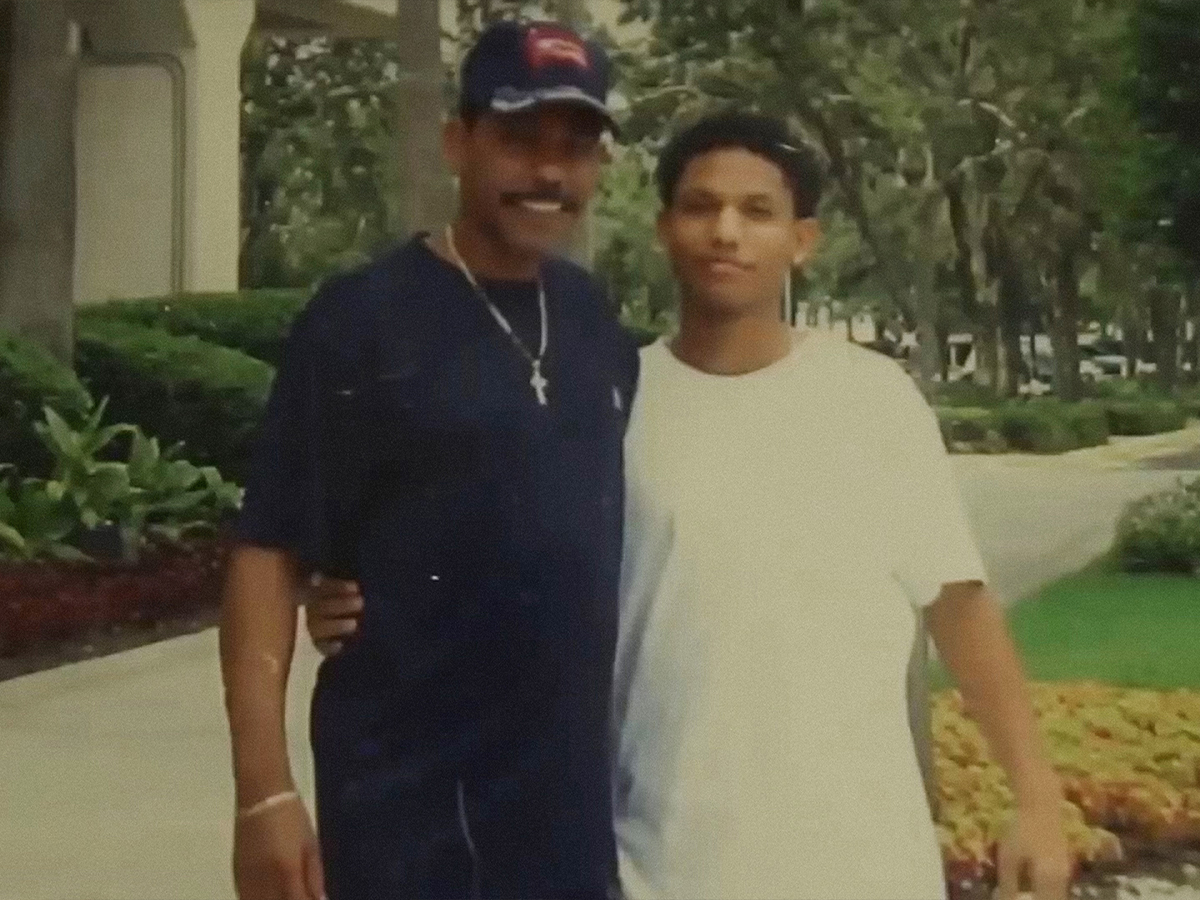The potential for the growth of parkour among other industries is basically exponential. Hardly any outside markets have been tapped and there are so many industries that crossover within the realm of what we do that could potentially be marketed through parkour. That said, the potential for the athlete-business relationship is equally exponential. So why hasn’t it happened?
With the exception of a handful, many practitioners aren’t very business savvy and for good reasons: we’re all too busy jumping off of things to care about business. To be honest though, that really isn’t much of an excuse. If you want something, you have to work for it and some things just take time and a lot of work. You may not think it, but many of you do care about business. I hear tons of people talk about wanting to make parkour their careers in some way or get sponsored, but not much is being done. Sponsorships aren’t simply handed out unless you are at the top of whatever it is you do. In the case of parkour, it’s even less likely unless you have an absurd amount of visibility or just happened to be at the right place at the right time.
The sponsorship proposal is not only your introduction to the company, but it is your sales pitch. However, most of the time, the job of the sponsorship proposal isn’t to sell you directly but to help your contact at the company to sell you internally. That being said, a sponsorship proposal is the absolute most important step in building an athlete-business relationship, besides being great at whatever it is you do. It can literally make or break the deal. You are not only the product but also the salesman and if you can’t sell the company’s contact with your first pitch, they’re less likely to listen the second time around, that is, if there is a second time. So not only do you need a sponsorship proposal, you need a great one and even then, just because you sent in a great sponsorship proposal doesn’t mean you are going to get the sponsorship. If you don’t get one you’ve at least left a good impression and potentially opened a connection with the company.
The first thing you need to understand is what a sponsorship actually is. A sponsorship is a mutual business relationship where the sponsor provides some kind of compensation (funding/goods/services) in exchange for access to the exploitable commercial potential associated with yourself. In short, you’re the product that sells their products. And a sponsorship is always an investment for a return. The company is investing in you so that they can continue to grow.
Since my training began in 2003, I’ve had personal sponsorship relations with GoPro, Outdoor Tech, Cloudkicker, Detour, NOW Energy Bar, Fluid and a handful of others through Team Sanjuu. Currently, I am an Etre Fort sponsored athlete and have a working relationship with my favorite shoe company. That being said, I know a thing or two about sponsorships.
So before you jump right into writing a sponsorship proposal and potentially get turned down, or worse, get an ankle thing, let’s walk through what you need to know.

Before you can approach a potential sponsor, you have to establish what you have to offer and how that will help them. You are your product, remember?

PERSONAL ATTRIBUTES / SKILLS
What do you have that will be of value to the sponsor? Obviously, in the case of parkour, being able to move well is a must, however, what can you off them outside of movement? This could involve having a marketable look, good social media skills, a large social reach, public speaking ability, or other marketing skills. It’s good to have a solid skill set just in case looking unbelievably attractive and sexual favors won’t work.

Outside of movement, I am an established artist with a focus on photography, film-making, illustration, and design; a writer (obviously), musician, I can cook pretty damn well and have a background in business and marketing. I have a decent social following and one that extends into more markets than just that of movement. And sometimes, I can make myself look somewhat attractive but only sometimes And most importantly, I have a beard. All of these skills can be leveraged by my potential sponsors.



TARGET AUDIENCE
Who is your target audience? If it’s only your mom because you’ve lived in a basement your whole life and don’t know anybody else, go meet people, this will never do. Who is the potential sponsor’s target audience and how does it overlap with your own? If the potential sponsor is marketing to a predominately male audience, ages 18-30, relatively poor and homeless-looking, who wear the same pair of dirty 3XL sweatpants on the daily, you’re in. If not, keep looking. Unless, of course, you are a man and their target audience is predominately women, ages 18-30 who are interested in looking at dirty men, well then you may be in luck as well.

MARKETING
Think of sponsorship like a marketing investment and you are the marketing campaign. Marketing is one of the first places to receive budget cuts, so how can they market through you that they cannot through alternative marketing channels? I mean, parkour is pretty unique in itself, especially if you’re well-known through the community and have loads of YouTube subscribers. If not, get creative.
When working on media projects, make sure to keep your sponsor in mind. Not only did I make sure they were represented through their apparel, both through myself and others, but made use of logos at the beginning and throughout.
Have an event coming up? Make sure they are represented, even if they aren’t involved. Before anything, talk with them about involvement. They may be interested in having promotional material to giveaway, products to sell or some kind of advertising space. Even if they aren’t interested in being involved with the event themselves, it is a good opportunity to give them some exposure through the use of their logos and their product.



OUTCOME FOR SPONSOR
How can you improve a sponsor’s business by partnering with you? Can you increase their sales? Can you broaden their audience and bring them more fans? Can you bake them cookies on the regular and do backflips for the staff at company meetings? You know, to boost staff morale.

Once you understand what you have to offer, it’s time to research who your potential sponsor is.
REALLY KNOW THEM
If you plan to work with someone, you should know who they are and what they are selling. Learn the history behind the brand, its mission, target market, the industry and really know the product or service, as it is what you are ultimately selling. Start with the brand’s website. Usually, you can find company information, mission statement, a list of employees and product information. Then you have social networks like Facebook, Twitter, Instagram, and LinkedIn. You can learn a lot about the company and itsl customers from following them, watching the things they post and how customers interact. This is why hashtags exist. LinkedIn is mainly for professional networking, so the people you’re looking to know are usually there, as well as information about them. It also opens up the possibility of networking opportunities. Wikipedia is also great as the articles provide links designed to guide the user to related pages with additional information. Then, of course, you have your handy dandy web search. Use relevant search terms like ‘sponsor,’ ‘sponsorship,’ ‘market’ and ‘marketing.’ Just make sure your sources are reliable. If it’s on the interwebs it must be true, right? If the websites you are getting information from are places like farangisafuckingscamtheyneversentmyshirtandatemycat.co.uk or iamathirteenyearoldshitfacefromredditwholovestakeflight.unreliable.com, they don’t list any sources and look like they’ve been designed by a blind meth head, just remember to thoroughly evaluate the research and quadruple check less sketchy sources for consistency. Otherwise, company headquarters ninja missions and researching the CEO’s wife are generally unsound practices; save as a last resort.
BRANDS TARGET AUDIENCE
Once again, you’ll need to figure out who their target market is. If it doesn’t crossover with your target audience, you’re most likely out of luck. You should understand how they use sponsorships to achieve their objectives. You can do this by researching other individuals and groups they have sponsored and how they have used these individuals in their marketing campaigns.
INITIAL CONTACT
Initial contact isn’t necessary, however, I feel like more times than not, it adds an extra hint of professionalism to the equation and often helps open the doors to building a relationship instead of simply jumping into one. You know damn well that jumping into relationships is like blindly hurdling over a wall, missing the ledge below, and taking the story drop into a bush filled with wasps. I mean, I definitely haven’t experienced this first hand, but you know, it’s a bad idea.
Even though it isn’t actually necessary and you can begin sponsorship relationships without it, initial contact is one of the most important steps. It’s like being considered an “unknown” within the parkour community, except in the business world, we’re all unknowns. Let’s be honest, nobody knows who the hell you are, even if you think they should. So, let them know you exist. Reach out to them on social media, send an email promo, or underbar through their car window while they’re stuck waiting on the freeway and have a meeting right there. No better time than the now, right?
The point here isn’t to establish anything about sponsorships, just let them know you’re alive, that you are mildly interesting and that you support them and their brand. Get creative and leave them with something they will remember. That way, when you make the first move, you will have something to base your contact on.
THE YES MAN
You know what you want and who they are, so now it’s time to make your first move. There are loads of people who can say ‘no’ so you want to go directly to the one that can say any of the following: Si, oui, hai, ne, da, ja or fuck yes.
You should know who you are directing your proposal to. If it is a larger company, this is generally the brand manager or senior member of the brand team, whereas in smaller companies, it may be the marketing director. You may think you would want to send your proposal to the sponsorship manager, however, they usually aren’t the ones in control, just the one that works with you. If you jump too high and hit the CEO, usually you will just fall down a few ledges and land on the right desk if you’re lucky. Depending on the person, they may just also delete your email or throw away your letter without reading it. It isn’t my preferred method, however, my last two sponsorship relationships have been due to direct contact with CEOs. Let me note that the only reason this worked is that the CEOs of both companies were in charge of these matters. Usually, this is a no go, especially for larger brands.
METHODS OF CONTACT
So when it comes to contacting your potential sponsor, you have a few options.
Times have changed and cold calling is less effective in this day and age. Warm calling, on the other hand, is a little different. So think of the warm call as solicitation with prior contact. Perhaps, you met this individual at an event, you were followed by this person on Twitter or you were referred by someone like a colleague. I’m not too fond when solicitors call outright but when I get a promotional piece from a company followed by a call, generally, I’m more open to the experience. So how do you go about the warm call if you haven’t met this person or had no prior experience with them? You make one happen of course! The easiest method is by calling the receptionist and asking who you can speak with about possible sponsorship opportunities. Usually, you can at least get a name and number or email, and if they’ve had a good day and you’re polite, sometimes they’ll connect you directly with the person in charge of sponsorships. If not, you still have the information for your “yes man” as well as a referral.
Social media has slowly crept into the hearts and souls of businesses everywhere and has become a standard and generally accepted method of contact. Places like Twitter, Facebook, Instagram, and LinkedIn are all acceptable methods of finding and contacting the person you are looking for. It’s also much less annoying than getting an unexpected solicitation call. I usually give the person a follow, in hopes that they follow me back, before making contact.
And obviously, you have email. I feel like email, at least for me personally, is my preferred method of being contacted as there is some mystical field of professionalism surrounding it, especially if it comes from your personal domain.
One method that I feel people are starting to overlook is the good, old-fashioned, hand-typed letter. Don’t handwrite that shit though, unless it’s a love letter, this isn’t the Dark Ages (although, don’t get me wrong, I love handwriting letters). There’s this thing called technology, and it’s advanced a little since the quill pen and ink. But seriously, nothing excites me more than getting real mail, especially in an age that is being dominated by digital technology.
My favorite, if possible, is the live appearance. You know, just stroll in like you own the place. People are busy and usually won’t take the time to sit down right then and there, and sometimes this isn’t even an option, but it sets you apart from the crowd and gives you a reason to call. But then again, you never know. I’ve had friends walk into places and walk out building sponsorship relationships on the same day. In the age of keyboard warriors, cute pet videos, and hardcore parkour, it’s nice to see and interact with a real living human sometimes.
HOW TO HANDLE THYSELF
So, you have two options when it comes to contact. You can either take the steps in building a solid, trusting relationship or you can just send them a sponsorship proposal and hope they give a damn. I mean, to be honest, I’ve had both work equally well. However, the first definitely has led to better opportunities.
So if you want to take things a little more seriously, you have some time to spare and are interested in building a solid foundation for a relationship, you know who to call or who you are looking for, so reach out to them. If you make a call to the company, you are most likely going to have to get past the dreaded receptionist. The easiest method of getting to the person who you are looking for is to be a human and ask a question. I’d say something along the lines of, “Hello, my name is (insert name here) and I wanted to know who I could speak with about sponsorship opportunities?” Once you’ve connected with the person you’re looking for, introduce yourself and ask something simple like, “I was wondering what you look for in sponsorship relationships and would you happen to have a copy of your sponsorship guidelines?” Instead of saying you are interested in a sponsorship, you break the ice by asking to learn a little more about who they are as a company. Once again, your goal is to establish a connection, not sell yourself just yet.
As things progress, and you understand what they are looking for, then you can reach out with a proposal. Like I said before, I’ve also had great success having no prior contact with a company, shooting a few messages back and forth and simply submitting them a proposal. Sometimes, you may be looking to secure a sponsorship for something like an event that has a deadline closing in.
Remember, the people you are connecting with are humans, so remember to connect with them on a human level.
WHAT TO EXPECT
Hope for the best, plan for the worst, expect nothing and prepare to be surprised. The absolute worst thing that can happen is that somebody says no or tells you that they are currently not looking for sponsorship relationships. Great, now move on with life and try again. You’re still breathing aren’t you?
Sometimes good things take time. So if you aren’t the patient type, start practicing. One of the companies I am currently working on building a relationship with took about a month to reply, but when they did, it was more than what I hoped to hear. It’s been a year and our relationship is still in the works and I am not sure what will become of it, but it opened up some great connections and the door to some wonderful possibilities.
THE PROPOSAL
Before we get to some real-world sponsorship proposal examples, let’s break down what goes into one. Your proposal should be short and sweet. Include everything that needs to be included and leave out the fluff.
THE INTRODUCTION
This is your introduction and chance to get the potential sponsor to listen, so keep things short and sweet. Your introduction should include a description of you, your team, the event or opportunity that you are trying to have sponsored.
SUPPORTING INFORMATION
Storytime. Fill them in on the details of you, your team, the event or opportunity.
BENEFITS
Why do you want the companies involvement and what are you looking for? If you’re looking for something specific, let them know, but also be open to other possibilities.
What do you have to offer them? What kind of advertising channels can you promote them through? How can they utilize you in existing campaigns? What do you have to offer that they don’t already or don’t have enough of?
IMPLEMENTATION
How will you accomplish the things you say you will? Can you work on deadlines? Can you keep up regular open communication? Tell them how you will get shit done.
CALL FOR ACTION
Give them the option to contact you on their own terms or ask if they would like to arrange a meeting. Just make sure they know what to do next.

There are a few forms of sponsorship proposals that I use, each with their own purpose and each having their own advantages and disadvantages. One in the style of your typical cover letter and resume and another that is more of a small portfolio.
I tend to use the resume style proposal to get my message across quickly and directly. This is usually reserved for potential sponsors that I had some prior contact with or ones I feel may not want or have time to review something slightly more extensive. Along with this, I attach a media kit that includes relevant photos, videos, and other sample media. I usually present this proposal as an email, PDF or mailed letter. This, unlike your stereotypical resume, usually incorporates some basic design into the layout.
The portfolio proposal focuses on a more graphics-oriented design and is used with larger potential sponsors, or ones that I usually have had no prior contact with. This method also provides you with a good way of neatly and professionally showing off other skills such as photography, videography or design. I usually present this portfolio as a PDF or HTML website.
This is the sponsorship proposal I used when contacting Felix and Roger from ETRE-FORT. My “in” with the company was the fact that they had sent me one of the first pairs of their sweatpants in a giveaway and remembered who I was. Remember, warm calling. On top of that, I know many of the other sponsored athletes and knew what to expect.




This sponsorship proposal was used when I contacted my favorite shoe company. I’ve removed their name because the status of our relationship is not public or concrete. My “in” with this company was the fact that I had provided them with a different perspective of parkour than they had seen previously. They had worked with parkour athletes in the past, but things hadn’t worked out due to conflicting view points and unprofessional brand representation. So, I thought I would sell them on an angle that no one else had: developing parkour fashion. They loved it.


Getting the sponsorship is just the first step. Building and maintaining that relationship is the real challenge. Just as in any relationship, it takes work to make it work. However, that work can lead to great benefits both for yourself and your partner. That being said, good luck!
If this guide has helped you in getting the sponsorship or helped you overcome something that has held you back from trying, let us know. If you have your own sponsorship experiences, advice or ideas that we did not cover, please share them in the comments below!
Want more? Subscribe to help us create more stories like this one and to make sure that we’re able to continue creating the content you love.








